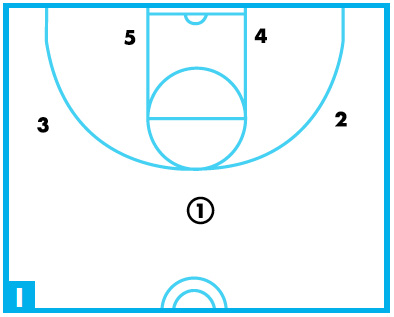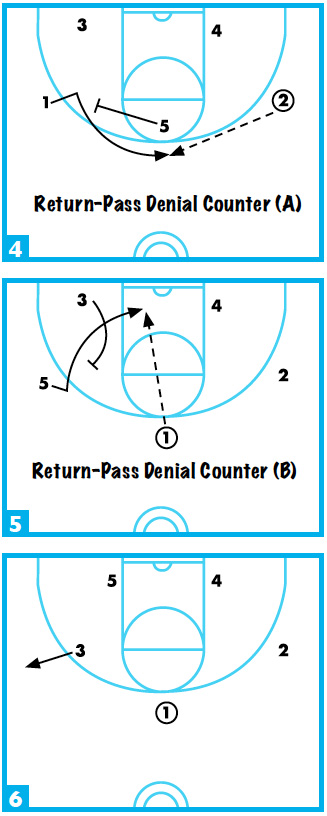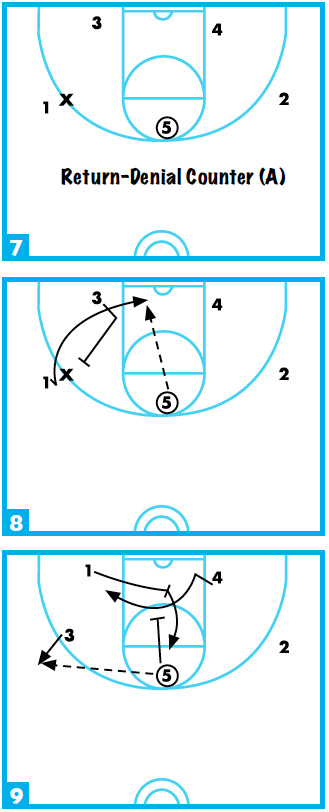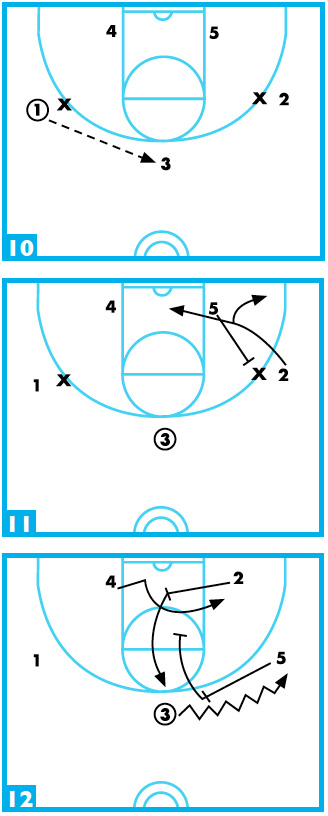Learning the ‘Demon’ controlled motion offense
Installing a new offense is never easy. Motion offenses are increasingly popular, but what if you’re concerned the players can’t make all the proper reads? Another concern for coaches is lack of a true post player. In that instance, how do you pick an offense?
The “Demon” controlled motion offense is a continuity scheme but also has five-player motion principles. The best part is players quickly pick up the fundamentals of the offense.
Many coaches, myself included, are not crazy about continuity offenses because they’re easy to scout. “Demon” counters these concerns with easy adjustments to keep defenses guessing.
» ALSO SEE: 4 drills for teaching the motion offense
For example, if the opposing coach wants to switch screens, the defense then faces constant mismatches on the block and perimeter. If the opposition wants to play you straight-up, that makes the screen-the-screener action hard to defend. And, if the other team likes to get out in the passing lanes, you can use on-the-ball screens and backscreens.
 Initial set & movements
Initial set & movements
Another bonus to this offense is that teams can start in a box, low double-stack, high double-stack or a 1-4 set. From there, they jump into a 3-out, 2-in set to start.
DIAGRAM 1: 3-out, 2-in set.
DIAGRAM 2: Initial movements (A). A pass to either wing initiates the offense. In this case, the pass is made from 1 to 2. 1 then cuts into the lane to screen for 5, who comes to the top of the key. 3 goes to a soft spot on the weak-side baseline, and 1 replaces 3 on the wing.
 DIAGRAM 3: Initial movements (B). 5, now at the top, quickly swings to 1 on the wing. 3 screens across for 4, and 5 cuts into the lane to screen for 3, who replaces 5 at the top. The offense is now back in the original 3-out, 2-in set.
DIAGRAM 3: Initial movements (B). 5, now at the top, quickly swings to 1 on the wing. 3 screens across for 4, and 5 cuts into the lane to screen for 3, who replaces 5 at the top. The offense is now back in the original 3-out, 2-in set.
 Return-pass denial
Return-pass denial
The first way for the defense to attack this motion is to fight through the first screen and contest the return pass to 5.
DIAGRAM 4: Return-pass denial counter (A). When 5 is denied the pass toward the top of the set, 5 quickly screens for 1. 1 comes back to the top (it’s important to reverse the ball as quickly as possible).
DIAGRAM 5: Return-pass denial counter (B). 3 steps up to backscreen for 5 on the wing. This sets up high-low action for a lob or seal on the block with 1 passing to 5.
DIAGRAM 6: Return-pass denial counter (C). If the pass to 5 is not available, the offense is now back in a 3-out, 2-in.
 Reversal-denial counter
Reversal-denial counter
Sometimes, the defense allows the pass from the wing to the middle (2 to 5) and instead cuts off the reversal from 5 to 1. The counter for this is a backscreen to free up 1.
DIAGRAM 7: Reversal-denial counter (A). When 1 is denied on the wing from receiving a pass from 5, move into the reversal-denial counter.
DIAGRAM 8: Reversal-denial counter (B). When 1 is denied on the wing from receiving a pass, they set up the backdoor cut by flashing quickly toward the ball. 3 comes high to backscreen the defender. 1 cuts hard to the hoop. 5 passes to 1, assuming 1 is open for the layup.
DIAGRAM 9: Reversal-denial counter (C). After setting the backscreen for 1, 3 pops to the wing. 5 passes to 3 to complete the ball reversal. 1 screens across the lane for 4. 4 comes hard to the ball-side block.
After making the pass to 3, 5 sets a screen for 1 in the middle of the lane. 1 uses the screen to come to the top of the set. If a pass from 3 to 4 cannot be made, the offense is back in a 3-out, 2-in set.
 Double-wing denial
Double-wing denial
At any point during the motion if the player at the top is unable to make a pass, one post sets a backscreen for a wing. The backscreen is set on the opposite side of the court from where the pass back to the middle came from.
DIAGRAM 10: Double-wing-denial counter (A). In this instance, you cycled through the motion once and 1 has passed the ball back to 3. At this point, both wing defenders are in denial, and 3 doesn’t have a wing-pass option.
DIAGRAM 11: Double-wing-denial counter (B). Because the pass went from 1 to 3, the backscreen comes on the other side of the court with 5 screening for 2.
DIAGRAM 12: Double-wing-denial counter (C). If 3 doesn’t get the ball to 2 on the backdoor cut, 5 sets an on-ball screen for 3. 3 looks to score, and 2 cross-screens for 4. 5 comes into the lane to set a downscreen for 4. 4 comes to the top. 3 has dribbled toward the wing if 3 cannot get to the rim. This puts the offense back in the 3-out, 2-in set.
This controlled motion offense is not complicated. However, it creates problems for the defense because of the movement and number of screens. The best way to defend it is to switch on screens, but that creates mismatches. The mismatches lead to inside shots, even for teams without a true post player. However, failing to switch is worse, which is why the controlled motion offense is so effective, even for teams that might struggle to learn a true motion attack.
Lee Wimberley is an assistant high school basketball coach at Wynne High School in Arkansas.









